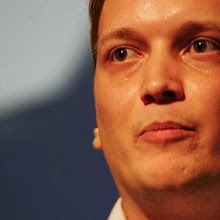What happened on October 5th?
I don't know exactly what happened in Belgrade on October 5th 2000, I wasn't there. I was drafted into the Army on September 9th, almost a month before the day Milosevic was brought down. On October 5th I was on top of some mountain in Montenegro with my unit, without much information about the protests taking place in the capital. I had a tiny radio but it was taken away from me by my commanding officer, concerned that we may get unconfirmed information from unofficial sources.
By the end of the day every officer in my unit disappeared and we were left alone. Soldiers were debating what to do: some said we should drop our weapons and go to Belgrade to join the protests, others said we should keep our weapons and join the protests (it would have taken us several days to reach Belgrade, but we weren’t bothered much with these “technical details”). In the morning on October 6th the officers announced that new government came to power and that the Army stayed and would continue to stay out of politics. Before this, one of the petty-officers approached me, shook my hand and said: “Congratulations, you won.” This is how I found out that Milosevic was finished.
But enough anecdotes, I need to tell you the whole story. In order to understand how Milosevic was brought down, we need to examine how the opposition came up with the strategy to confront Milosevic at the elections and respond to the electoral fraud which was imminent. This strategy was the reason why the opposition managed to succeed and We shall see how this strategy was developed as a natural result of lessons learned in the ten year long struggle against Milosevic during the nineties. We will also see what was the role of Otpor in developoing and implementing that strategy .
Serbia in the eve of the October 5th Uprising was more a post war then a post communist country. Slobodan Milosevic, who came to power in 1987, already waged and lost four wars, including the one with NATO, country’s economy declined, its institutions were destroyed and population impoverished, but he remained in power. Officially, the government was a coalition of three parties: Socialist Party of Serbia of Slobodan Milosevic, Serbian Radical Party of Vojislav Seselj and the Yugoslav Left of Mirjana Markovic, Milosevic’s wife, but everybody knew that Milosevic was in charge.
Since Serbia was in a de facto state of war between 1991 and 1999, opposition activity in general was considered by the regime as an attempt to undermine country’s ability to defend itself. Opposition activists were regarded as traitors, spies and mercenaries paid by the US and NATO.
Milosevic also exploited rivalry among opposition leaders to his own advantage, often inducing splits in the opposition parties. Serbia’s main oppositionists, especially Zoran Djindjic of the Democratic Party and Vuk Draskovic of Serbian Renewal Movement, were too busy fighting each other and never managed to fully challenge Milosevic. University and independent media were constantly harassed by the regime; individuals who were seen as a potential threat to regime were found assassinated.
Since traditional opposition activity was not sufficient, Otpor, student resistance movement emerged in 1998 as another significant actor, and one Milosevic hadn’t included in his calculations. Non-partisan, but openly anti-regime organization, with loose and dynamic structure, leaderless but with a clear message, Otpor played a role in bringing opposition parties together and mobilizing the population of Serbia against Milosevic.
Otpor was an organization that came out of the 1996-97 Student Protest. It was founded by people who took part in that protest, drawing from the legacy and learning from mistakes of that protest. It adopted the same method of nonviolent demonstrations and elevated it to a more strategic level. So one doesn't need to look any further - Otpor was a continuation of the Student Protest, not a homework given at some seminar in Budapest. But it's not just Otpor, the front against Milosevic was much wider, it consisted of political parties, trade unions, nongovernmental organizations and independent media. By the beginning of 2000 this broad movement adopted a common strategy which will be examined more closely in my next post.
>">Tweet


0 Comments:
Post a Comment
<< Home